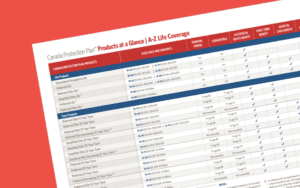
As individuals reach their 40s, they often find themselves at a pivotal stage in life, balancing family responsibilities, career growth, and future financial planning. This period marks an essential time to re-evaluate personal finance strategies, including considering life insurance.
Transitioning into this decade brings about a significant shift in priorities and responsibilities, making it crucial to adapt financial strategies to meet evolving needs. Whether it’s to protect against unforeseen events, provide for your family’s future, or serve as part of a comprehensive retirement plan, life insurance in your 40s can offer one source of stability in an otherwise dynamic phase of life.
Life Insurance Needs at Difference Life Stages
For individuals in their 20s and 30s, life can seem less encumbered by financial obligations that often come later. With potentially fewer familial responsibilities and lower health concerns, life insurance may be significantly more affordable during these years. The primary focus at this stage typically revolves around covering outstanding debts—such as student loans or personal loans1,—and softening the impact of a loss of income on a spouse or partner in the event of one’s untimely death. Life insurance can help ensure that any dependents or co-signers on loans are not left in a precarious financial situation.
By the time individuals reach their 40s, the financial landscape often becomes more complex. Increased responsibilities, such as mortgages, education expenses for children, and higher living costs, become more prevalent.2 Health considerations also begin to play a more significant role. The risk of developing health issues may increase with age, impacting the need for insurance and the cost of premiums. Consequently, life insurance may serve a dual purpose: protecting against a general loss of income due to an untimely death and helping loved ones manage accumulated debt and future financial plans.
Benefits of Getting Life Insurance Over 40
While the prospect of obtaining life insurance might seem more daunting as one ages, the advantages can be substantial, especially when tailored to the needs and circumstances of those in their 40s and beyond.
Lower Premiums Compared to Older Ages
While premiums generally increase with age, those in their 40s can still enjoy relatively lower rates compared to older individuals. This is because individuals in their 40s are often considered to be in relatively good health, especially if they have no significant pre-existing conditions.3
Securing Financial Stability for Loved Ones
Life insurance acquired in one’s 40s can play a crucial role in securing the financial stability of dependents. This period often involves managing significant financial obligations, such as mortgage payments, education expenses for children, and day-to-day living costs. A life insurance policy can ensure that dependents are not left with financial burdens in the event of an untimely death.
Savings Opportunities
Certain life insurance policies, like whole life or universal life insurance, include a savings component that can grow tax-deferred over time.4 For individuals in their 40s, this feature can be particularly appealing as part of a comprehensive retirement planning strategy. The cash value accumulation within these policies can serve as an additional financial resource in later years, offering flexibility in how funds are used—whether for emergencies, education expenses, or supplementing retirement income.
Peace of Mind
Knowing that your loved ones will be financially protected in your absence can alleviate stress and allow you to focus on enjoying life. This psychological benefit, while intangible, is a crucial aspect of personal well-being and family security.
Factors to Consider When Purchasing Life Insurance After 40
When considering life insurance over the age of 40, several critical factors come into play that are essential for selecting a policy that aligns with your personal and financial circumstances and ensuring that your coverage is adequate and appropriate for your stage in life.
Current Financial Responsibilities
Evaluate the needs of your dependents, including your spouse, children, or possibly aging parents. Consider how long they will rely on your income and the level of support they require. This assessment may influence the amount of coverage you need to ensure their financial stability in your absence. Also, add up your outstanding debts, such as a mortgage, car loans, or credit card debts. If you have children, consider the costs associated with their future education.
Health Considerations and Premium Costs
Insurers typically require a medical exam or a health questionnaire to assess risk and determine rates. A history of medical conditions, smoking, or a high-risk lifestyle can increase premium costs. It’s essential to compare different policies and providers to find the most favourable terms that reflect your health status and lifestyle.
Long-term Financial Goals
Consider how life insurance fits into your broader financial planning. Do you need a policy that offers not just a death benefit but also a savings component, such as cash value accumulation? This could be particularly relevant if you’re looking for ways to supplement your retirement savings. Policies with an investment component, like whole or universal life insurance, may provide an additional resource in later years, though they generally come with higher premiums than term life insurance.
Length of Coverage Needed
Assess how long you’ll need life insurance coverage. This consideration will help determine whether term life insurance or permanent life insurance is more appropriate for you. Term life insurance provides coverage for a specific period, such as 10, 20, or 30 years, and might be suitable if you anticipate your financial obligations diminishing over time. On the other hand, permanent life insurance offers lifelong coverage and may be preferable if you seek to leave a legacy for your heirs or if you have long-term dependents, such as a child with special needs.5
Are you in your 40s and considering life insurance? Canada Protection Plan can guide you through your options and help you find the perfect policy to fit your needs. Contact us to get your free quote.

SOURCES:
- 1 https://www.cpacanada.ca/news/canada/financial-resolutions
- 2 https://www.cpacanada.ca/news/canada/financial-resolutions
- 3 https://www.investopedia.com/articles/personal-finance/022615/how-age-affects-life-insurance-rates.asp
- 4 https://ca.rbcwealthmanagement.com/documents/667880/667894/content.pdf/
- 5 https://www.cpp.ca/term-permanent-whole-life-insurance/
423179 CAN (03/24)











